Naturally Dyeing Wool With Red Cabbage
Natural dyes can be found all around us! From avocados to marigolds, cochineal beetles to red onions, people have found amazing ways to fill the world with color. In this tutorial, we’ll show you how to use red cabbage to dye our new 100% natural Carded Felting Wool into 3 different colors – pink, purple, and green. Let’s get cracking!

Project Duration: 1-2 days
Materials Used:- Gloves
- Red cabbage
- Alum powder
- White vinegar
- Baking soda
- Carded Felting Wool - F-11, 100% Wool
- Stainless-steel pot (x3)
- Stainless-steel mixing bowls
- Strainer or colander
- Stove top (preferably ceramic)
- Kitchen weight scale
- Carding brushes or wire pet brushes
*A disclaimer for aspiring natural dyers!
Red cabbage is more of a staining agent than a dye; that means that the color from red cabbage is not wash-safe or lightfast. If the dyed material is exposed to sunlight for extended periods of time, the color will fade and may eventually disappear.
Mordanting The Wool
What does mordanting mean?
Mordanting is the most important process of preparing fibers to accept color – it helps to ensure the most durable and long-lasting colors. This is not an optional step! If you don’t mordant the material you are planning to dye naturally, the color will wash out when you finish the dye process.
There are many different things you can use for mordanting, like tin, copper, tannic acid, and more, but we will be using alum powder for this dye project. Alum is non-toxic, safe to touch and eat, and is easy to find in the baking isle of most grocery stores. It works well with protein fibers such as wool and silk, making it a great choice for beginner and experienced dyers.
Here are the steps and calculations we made to mordant our wool.
1. Weigh out 100g of carded wool using a kitchen scale. Place the pot or bowl used to hold the wool on the scale first, then set the scale to zero. This will keep your wool in a contained space making it easy to weigh.

2. When using alum powder, the rule of thumb is to use 15% of the weight of fiber you will be dyeing. In this case, 100g of carded wool will equal to 15g of alum (100g of wool = 15g of alum).

3. Dissolve the 15g of alum in a cup of hot water.
4. Fill a pot with warm water, enough to cover the 100g of wool. Don’t put the wool in yet.
5. Add the dissolved alum to the warm water bath. Stir the solution into the water, mixing together well.

6. Now place the 100g of wool in the alum water bath. Gently squeeze the wool to help it absorb the water – wool is naturally water resistant, so it will need a little encouragement to soak up the liquid.

7. Place the pot on the stove with the heat set to LOW. Allow the water to heat for one hour. You do not want the water to boil. If the water starts to boil, it will start the felting process which will make it difficult for the wool to fully absorb the dye water. So try to keep an eye on the pot while you continue on to the next steps.

Prepping Dye Bath
Now we get to the good part! In this section we will walk you through the steps you need to create the actual dye for your wool.
1. Grab your red cabbage, a sharp knife, and a cutting board. Cut the cabbage in half, setting one half off to the side.

2. Chop one half of the cabbage into small pieces and place it all into one of the stainless-steel pots.
3. Fill the pot with enough water to almost cover the chopped cabbage. Do not completely cover the cabbage with water.

4. Turn the heat to LOW – we want the pot to stay at a simmer to pull the best color from the cabbage. If the water begins to boil, take the pot off the heat for a moment. Boiling the cabbage will destroy some of the potential dye!
5. Once the cabbage is soft and pale in color, take the pot off the heat in preparation for straining. Place the strainer in a large mixing bowl and grab a towel in case of spills.

6. Strain the cabbage from the dye water and keep it off to the side. Once the cabbage has cooled, you can remove it from the pot and dispose of it.

7. Repeat steps 1 and 2 with the other half of the red cabbage.
8. Pour the dye water you just strained into the new batch of cabbage. Repeat steps 4, 5, and 6.
And your dye bath is done! You now have a pot of red cabbage dye water, perfect for your mordanted wool. The second batch of cabbage may be a slightly different color than the first batch once you are done step 8 – don’t panic, this is normal!

Dyeing Your Wool
This section is a little more complex than the previous sections - we’ll be showing you how to get pink, purple, and green dye from your dye water, so be sure to read all the steps before you begin.
Below is an image from a small experiment we did to show you how the dye can change color, and what it looks like on paper.

1. Split your mordanted wool into three sections - as equal as you can make them - gently squeezing out excess water. Try not to squeeze them to dryness.

2. In each pot pour in 3 cups of dye water and 2 cups of tap water. If you don’t have enough dye water to put 3 cups in each pot, simply divide the water as equally as you can.

TIP: Everyone’s tap water has slightly different chemicals and qualities, so the tap water may turn your dye water more pink or green. The tap water we used is on the base end of the PH scale which made our green turn out beautifully, while the pink stayed more purple than we wanted. If this happens for your process, you can add more vinegar into the dye water before adding the wool.
3. Now it’s time to prep our different dye colors out of the red cabbage dye bath in preparation for the carded wool. For this step, you will need white vinegar and baking soda to act as modifiers for the pink/purple and green/blue color. The purple color will not be modified.
Green/Blue: Add 2 teaspoons of baking soda to one pot and stir well.
Pink/Purple: Add 1 ½ tablespoons of white vinegar to one pot and stir well.



4. Place your mordanted wool into the pots, gently pushing down on the wool to submerge it. Carefully squeeze the wool in the pot to make sure all the fibers absorb the dye water.

5. Set the heat to medium-low, letting your wool soak in the pots for an hour - maybe longer if you want to try getting a deeper color. It’s very important you don’t boil the water during this step. Try to keep an eye on the pots, adjusting the temperature as needed.
TIP: Try to move the wool AS LITTLE AS POSSBLE while it’s in the hot water – too much movement will begin the felting process, making it much harder to deal with once you are finished dyeing.

6. After an hour - or slightly longer - remove the dye pots from the heat and let them cool down. Once the pot is cool or lukewarm, reach into the dye water and remove the wool. Gently squeeze the dye water out of the wool, and place the wool into a bowl off to the side. Keep the different colors of wool separated.

7. Bring your wool to a sink and gently rinse the wool using lukewarm water. You will see a lot of color come out of the wool as you rinse.

8. Wring out as much water as you can from the wool and lay it out to dry. If you happen to be dyeing on a nice sunny day, laying the wool in the sun will greatly speed up the drying process.

TIP: If your carded wool has started to felt during this process, you can easily brush it back into loose wool by using carding brushes or wire pet brushes.
And that’s a wrap! You should now have carded wool in three lovely pastel shades of green, pink, and purple. Let us know how your natural dye experiments go by tagging us on social media.
 USA
USA CANADA
CANADA EUROPE
EUROPE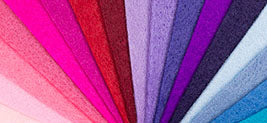

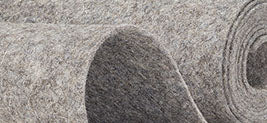

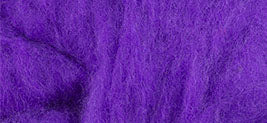
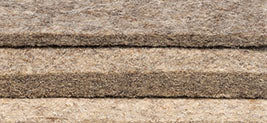


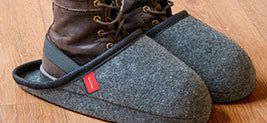

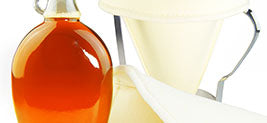
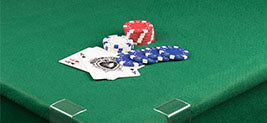
Leave a comment